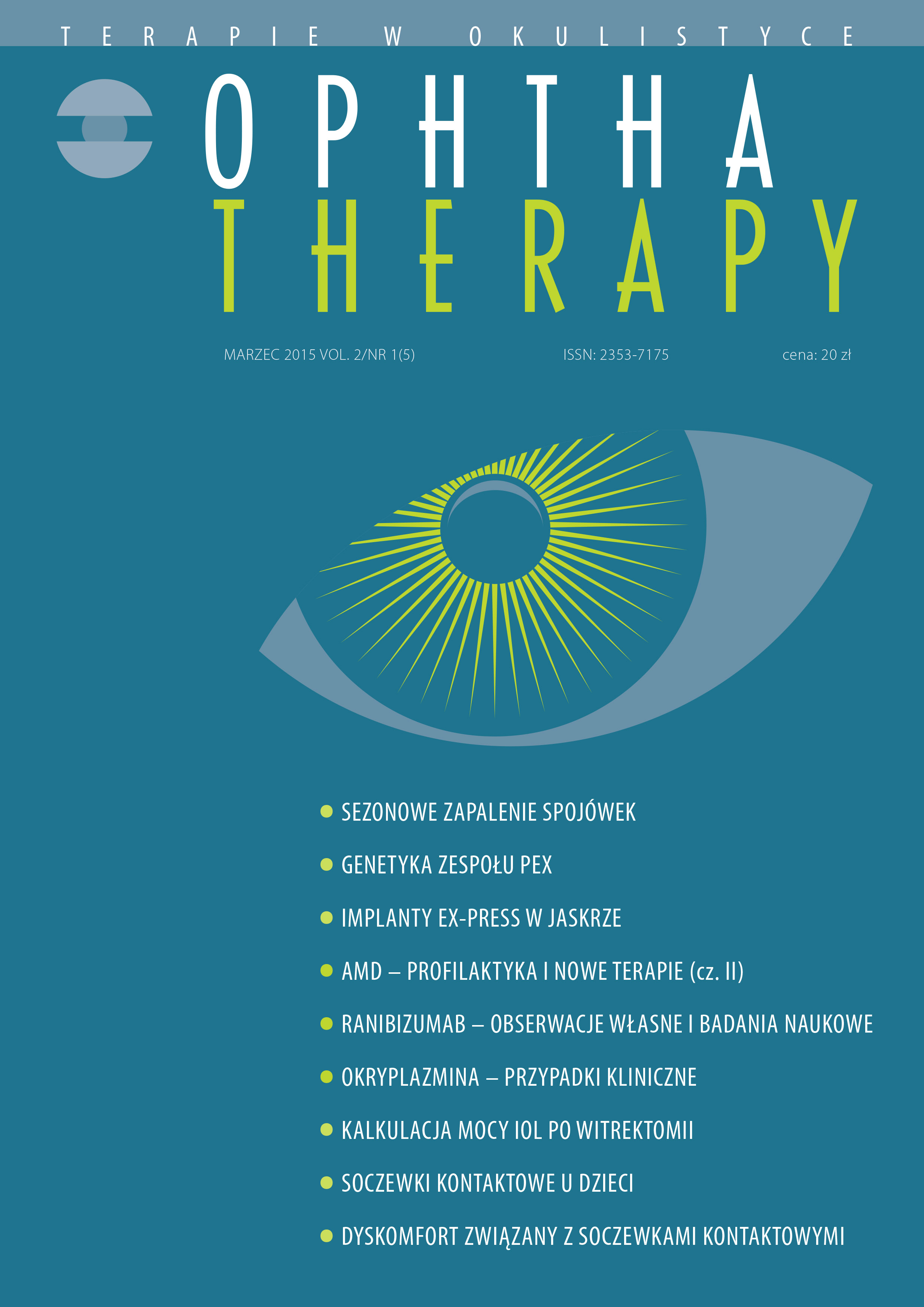Molecular genetics of exfoliation syndrome
Main Article Content
Abstract
Exfoliation syndrome is an age-related disorder of the extracellular matrix, characterized by progressive accumulation of abnormal fibrillar material in several ocular and extraocular tissues. Although the exact etiopathogenesis is still unknown, several genetic and environmental factors appear to be involved in disease pathogenesis. Recently, single nucleotide polymorphisms in lysyl oxidase-like 1 have been found to be strongly associated with exfoliation syndrome. Dysregulation of lysyl oxidase-like 1 specifity and activity, an enzyme with a role in tropoelastin cross-linking and elastin homeostasis is thought to be involved in the development of exfoliation syndrome. This review aims to examine the recent genetic findings in the disease process.
Downloads
Article Details

This work is licensed under a Creative Commons Attribution-NonCommercial-NoDerivatives 4.0 International License.
Copyright: © Medical Education sp. z o.o. License allowing third parties to copy and redistribute the material in any medium or format and to remix, transform, and build upon the material, provided the original work is properly cited and states its license.
Address reprint requests to: Medical Education, Marcin Kuźma (marcin.kuzma@mededu.pl)
References
2. Ritch R, Schlötzer-Schrehardt U, Konstas AG. Why is glaucoma associated with exfoliation syndrome? Prog Retin Eye Res. 2003; 22: 253-75.
3. Schlötzer-Schrehardt U, Naumann GO. Ocular and systemic pseudoexfoliation syndrome. Am J Ophthalmol. 2006; 141: 921-37.
4. Mossböck G, Weger M, Faschinger C et al. Methylenetetrahydrofolate reductase (MTHFR) 677C>T polymorphism and open angle glaucoma. Mol Vis. 2006; 12: 356-9.
5. Zenkel M, Kruse FE, Junemann AG et al. Clusterin deficiency in eyes with pseudoexfoliation syndrome may be implicated in the aggregation and deposition of pseudoexfoliative material. Invest Ophthalmol Vis Sci. 2006; 47: 1982-90.
6. Damji KF, Bains HS, Stefansson E et al. Is pseudoexfoliation syndrome inherited? A review of genetic and nongenetic factors and a new observation. Ophthalmic Genet. 1998; 19: 175-85.
7. Lemmelä S, Forsman E, Sistonen P et al. Genome-wide scan of exfoliation syndrome. Invest Ophthalmol Vis Sci. 2007; 48: 4136-42.
8. Krumbiegel M, Pasutto F, Mardin CY et al. Apolipoprotein E genotypes in pseudoexfoliation syndrome and pseudoexfoliation glaucoma. J Glaucoma 2010; 19: 561-5.
9. Wolf C, Gramer E, Muller-Myhsok B et al. Mitochondrial haplogroup U is associated with a reduced risk to develop exfoliation glaucoma in the German population. BMC Genet. 2010; 11: 8.
10. Elhawy E, Kamthan G, Dong CQ et al. Pseudoexfoliation syndrome, a systemic disorder with ocular manifestations. Hum Genomics. 2012; 6: 22.
11. Krumbiegel M, Pasutto F, Mardin CY et al. Exploring functional candidate genes for genetic association in german patients with pseudoexfoliation syndrome and pseudoexfoliation glaucoma. Invest Ophthalmol Vis Sci. 2009; 50: 2796-801.
12. Schlötzer-Schrehardt U. Genetics and genomics of pseudoexfoliation syndrome/glaucoma. Middle East Afr J Ophthalmol. 2011; 18: 30-6.
13. Chen H, Chen LJ, Zhang M et al. Ethnicity-based subgroup meta-analysis of the association of LOXL1 polymorphisms with glaucoma. Mol Vis. 2010; 16: 167-77.
14. Wang L, Fu S, Zhao W et al. LOXL1 Gene Polymorphism With Exfoliation Syndrome/Exfoliation Glaucoma: A Meta-Analysis. J Glaucoma. 2014 Oct 9 [epub ahead of print].
15. Thorleifsson G, Magnusson KP, Sulem P et al. Common sequence variants in the LOXL1 gene confer susceptibility to exfoliation glaucoma. Science. 2007; 317: 1397-400.
16. Williams SE, Whigham BT, Liu Y et al. Major LOXL1 risk allele is reversed in exfoliation glaucoma in a black South African population. Mol Vis. 2010; 16: 705-12.
17. Kasım B, İrkeç M, Alikaşifoğlu M et al. Association of LOXL1 gene polymorphisms with exfoliation syndrome/glaucoma and primary open angle glaucoma in a Turkish population. Mol Vis. 2013; 19: 114-20.
18. Challa P. Genetics of pseudoexfoliation syndrome. Curr Opin Ophthalmol. 2009; 20: 88-91.
19. Lucero HA, Kagan HM. Lysyl oxidase: an oxidative enzyme and effector of cell function. Cell Mol Life Sci. 2006; 63: 2304-16.
20. Thomassin L, Werneck CC, Broekelmann TJ et al. The Pro-regions of lysyl oxidase and lysyl oxidase-like 1 are required for deposition onto elastic fibers. J Biol Chem. 2005; 280: 42848-55.
21. Schlötzer-Schrehardt U, Pasutto F, Sommer P et al. Genotype-correlated expression of lysyl oxidase-like 1 in ocular tissues of patients with pseudoexfoliation syndrome/glaucoma and normal patients. Am J Pathol. 2008; 173: 1724-35.
22. Zenkel M, Krysta A, Pasutto F et al. Regulation of lysyl oxidase-like 1 (LOXL1) and elastin-related genes by pathogenic factors associated with pseudoexfoliation syndrome. Invest Ophthalmol Vis Sci. 2011; 52: 8488-95.
23. Guadarrama-Vallejo D, Miranda-Duarte A, Zenteno JC. The T allele of lysyl oxidase-like 1 rs41435250 is a novel risk factor for pseudoexfoliation syndrome and pseudoexfoliation glaucoma independently and through intragenic epistatic interaction. Mol Vis. 2013; 19: 1937-44.
24. Schlötzer-Schrehardt U, Hammer CM, Krysta AW et al. LOXL1 deficiency in the lamina cribrosa as candidate susceptibility factor for a pseudoexfoliation-specific risk of glaucoma. Ophthalmology. 2012; 119: 1832-43.

